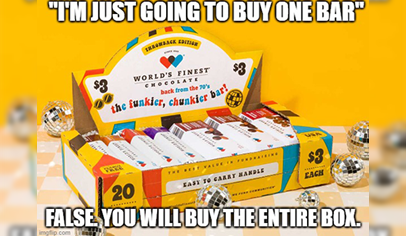Did you know that school groups raise more than $1.5 billion every year selling various products? No typo—that’s billion with a B.
The numbers are incredible: $30 million per state, $13,000 per school, $30 for every student in America. Enough for tens of thousands of arts and enrichment performers in schools. Enough for tens of thousands of field trips. Enough for field days and computers and playgrounds and math nights and hundreds of other events that turn schools into communities of learning.
And yet in many ways product fundraising remains the ugly duckling of the PTO world. A tragedy in New Jersey in the late ’90s (a student was killed selling product for a school) cast a harsh light on the industry. The image of Johnny or Janie hitting up the neighbors for a few bucks is easy pickings for those looking to criticize further. And—as your overstuffed parent group mailbox can attest—new fundraising options sponsored by glossy marketers or utilizing the latest technology seem to pop up every month.
The fact remains, however, that—marketing copy and promises aside—traditional product fundraising accounts for roughly 80 percent of the dollars that school groups use to provide “extras” for their schools. More than 2,000 fundraising companies operate in the United States and Canada. Product fundraising is still the most important piece of the fundraising puzzle for the vast majority of parent groups.
It’s within that reality that we present our guide to making sense of the increasingly busy product fundraising space. What to sell? How to sell? When to sell? Let us walk you through the fundamentals.
So Many Choices
The single biggest change in product fundraising—a once-simple category that was dominated by candy, catalogs, and gift wrap—is the tremendous increase in sales options available to parent groups.
A quick glance at the Web site for a single provider, Fundraising.com, reveals the extent of the growth. The new site has no fewer than 22 sales options, everything from lollipops and candy to beef jerky, coffee mugs, and “static clings.” The Association of Fund Raisers and Direct Sellers (AFRDS), the trade group for fundraising companies, lists more than 45 products offered for sale by its members—and its list doesn’t even include beef jerky and static clings. Obviously, the list is growing quickly.
“I wish you could just print a spreadsheet of all the options for us—products, profits, percentages—so we could figure out what to sell,” says Janet Hulseberg, PTO president at the Wilbraham Middle School in Wilbraham, Massachusetts, expressing the frustrations of many PTOers. And she makes a good point. With so many products, various percentage returns, different prices, the different tastes of different towns, and new products coming out all the time, deciding what to sell can be arduous.
“We’ve had an annual gift-wrap sale for several years,” notes Hulseberg. “And it works great. But there are other things out there, too. A new mom came in from Colorado and suggested cookie dough. She said her old school made $30,000 last year. It’s tough. The gift-wrap sale works—and if it’s not broken, don’t fix it—but we’re just not sure what to do. We also don’t want to overwhelm our families.”
The good news is that school groups can be successful selling just about anything that is a) of strong quality and b) a good fit for their group.
“Choosing the right product for you at the right price range is so important,” says Bill Greeley, a fundraising consultant based in Winthrop, Mass. He points out that conferring with an experienced representative (Bill’s been at it for 15 years)—one who’s worked with schools similar to yours—is the best way to make sure that your product selection is a good fit.
Your Fundraising Partner
The single biggest mistake school groups make with their major product fundraisers is failing to take full advantage of professional sales representatives and their years and years of experience. Perhaps it’s the title, sales rep, that keeps fundraising volunteers from counting on them, but these women and men are generally far from used-car salespeople.
Why are they different?
You and your rep have like motivation. In the typical used-car deal, your salesperson makes more money if he somehow convinces you to buy more car. The opposite is true in product fundraising—usually fundraising representatives’ commissions are tied to your success. The more product you sell, the more you both make.
Your rep and your group can become long-term partners. Most used-car salesman aren’t expecting to see you again to buy another car. They know that once you leave the lot, you’re not likely to be back for years. On the other hand, fundraising reps often work with the same schools every year, sometimes twice per year, for decades. Their goal is to treat you well and build a long-term, mutually beneficial relationship. Let them do that—it’s in your best interests.
Sure, keep them at arm’s length while you’re deciding on a partner. Check references. Compare products and services offered. Investigate guarantees and return policies. But once a fundraising representative has passed muster, make him or her a key part of your sale.
Generally, they can do a lot of the work for you. Letters? They’ll write them and often print them for you. Delivery day? Get their input on methods that work best at other schools. Prize packages? They’ll have the newest and most effective ideas. The lesson: Choose carefully, and then trust your choice.
Price and Percentage
In the best of worlds, fundraising would be unnecessary because schools would have every dollar they could possibly need. Of course, in that world we’d all look like models, chocolate would actually be a diet food, and diapers would change themselves.
In the meantime, the bottom line for fundraising is how many dollars you actually put in the bank at the end of your sale. Several things determine that number:
- Total dollars sold
- Your percentage of the total
- Shipping or delivery fees, if any
- Prize costs, if any
Interestingly, the best deal for PTOs is not always the highest percentage return. Certainly, if everything else is equal, then a PTO should look for as high a percentage return as possible. But it’s the many variables that make percentage math somewhat tricky.
Take, for example, catalog sales (most often pre-holiday with a wide selection of items from which your supporters can choose). If Company A offers your PTO a 45 percent return and Company B offers your PTO a 50 percent return, your natural inclination will be to run a sale with Company B. However, if the items in Company A’s catalog are priced more competitively, or if Company A has a wider selection of more popular items, or if Company A offers more comprehensive service or a better prize package, then you may well earn more from your fundraiser by going with the lower percentage choice. Remember: The percentage you receive means very little if your product doesn’t sell or if your supporters have a bad experience.
Regrettably, some groups do real harm to their long-term fundraising success by choosing inferior products or by making decisions based purely on short-term profit percentages. “When a fundraiser makes a fundraising decision, he or she is shopping for 600 families,” points out Karl Hawes of Entertainment Fundraising and Sally Foster. “The fundraiser wants to offer something those families really want and something they can be proud to offer to their friends and families.” If your supporters are unsatisfied with your product quality or if they’re burned with delivery problems or the like, you’ll still make your money this year, but how will you make out the next time you ask for their support?
A new twist in this percentage math is the emergence of pure Internet product fundraising companies. Surf to Fundraising.com (www.fundraising.com), for example, and you’ll find the bold statement: “No Middleman = More Profit for You.” It’s a familiar Internet claim: “The Internet makes our costs less, so we can pass our savings on to you.” And at first glance, the percentages offered at several different Web players are impressive. The key is to remember the basics: Choose your vendor carefully (put any Web supplier through as rigorous a checking process as you would any in-person rep), and then take terrific advantage of the unique benefits offered by that vendor.
Like in other PTO markets, heavy competition here should again be the PTO’s friend. New Internet players only add to the competition. There’s no reason why you shouldn’t expect a strong return and excellent service. If you’re not satisfied with your supplier, look elsewhere. If you have a profitable and positive experience with a trustworthy partner, treat them like gold and reward them with repeat business. Make sure incoming leaders know about outstanding service and not-so-outstanding service.
A Strong Future
In the past year, several national news outlets have covered the growing trend in Internet Affiliate Fundraising—those companies like Schoolpop.com and Schoolcash.com that pay your school cash based on your supporters’ Internet shopping. Almost without fail, the articles have focused on a “say goodbye to candy sales/product fundraising” theme.
Ironically, even the leaders of those emerging companies know that product fundraising isn’t going anywhere anytime soon. PTOs need to fundraise so they can support their many valuable projects in the school year. Product fundraising remains an effective means to meet those needs. If another option comes around that offers even more money to help schools, great! It’s not an either/or proposition.
And product fundraising doesn’t need to be hectic. Following the basics—choosing a good partner and a quality product and organizing well—leads to long-term success. For most schools, a careful, concerted effort around one sale, maybe two, is enough to meet 70–80 percent of PTO funding needs for the year.
“By looking for quality and doing things right, you’ll make more money,” points out Peter Worthington, a long-time fundraising consultant from Cranston, Rhode Island. “You’ll build loyalty. You’ll build a customer base, and your supporters will look forward to what’s coming next year.”














